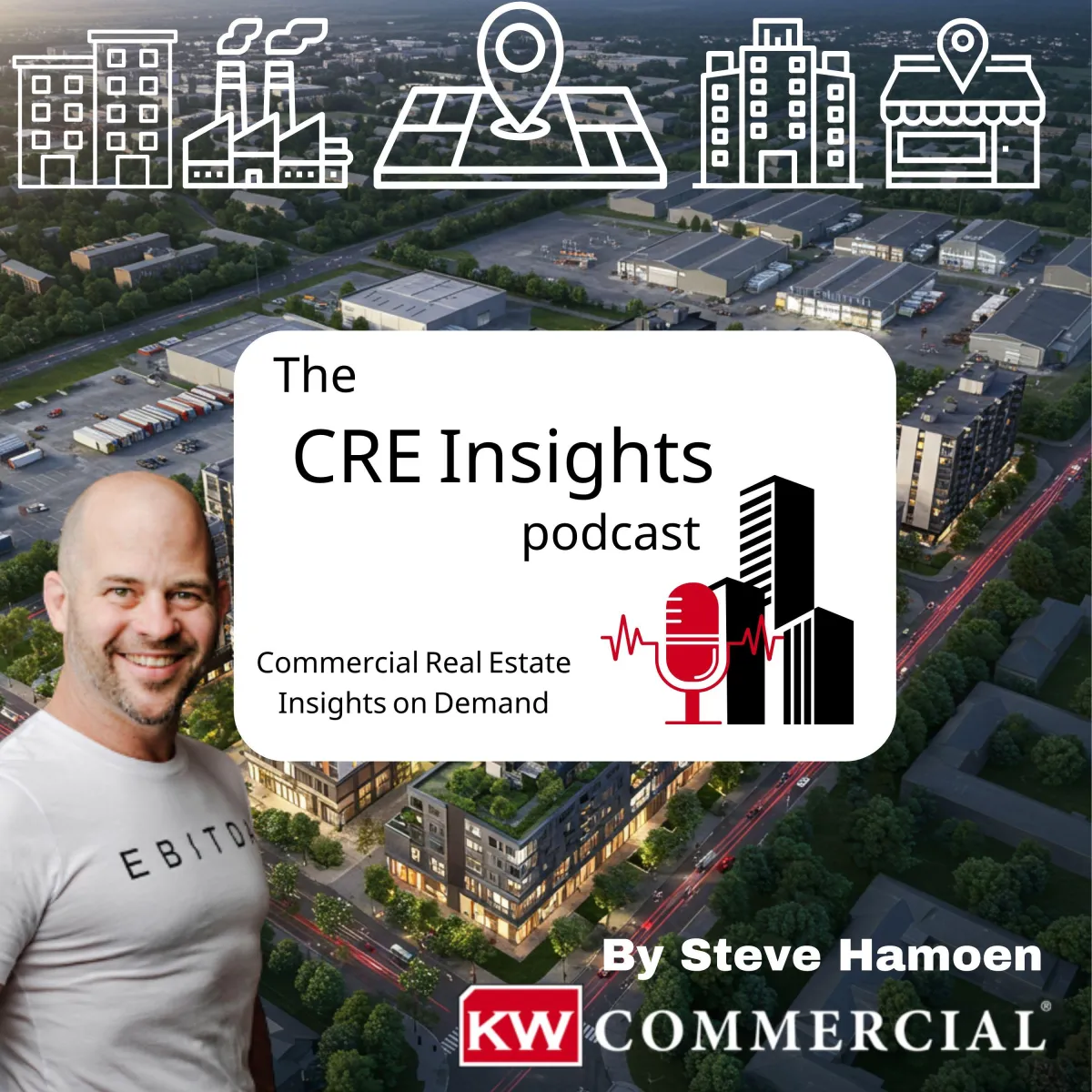
Tariffs, Debt, and Democracy: Dalio vs. Fukuyama on the Future of Real Estate in 2025
This is the Commercial Real Estate Insights Podcast. I’m Steve Hamoen, and it is 8:56 AM on Tuesday, March 25, 2025. Here’s what we’re covering today: “Tariffs Are Back—What That Means for CRE Prices,” “Dalio vs. Fukuyama: Who’s Right About the Real Estate Future?” and “Mark Carney Takes Power—Canada’s New Path Forward for Developers.” And in other news: “Trump’s Policies, Mortgage Momentum, and Why the Cycle Is Turning.”
First… let’s talk about the economic elephant in the room: “TARIFFS ARE BACK—and they’re hitting real estate hard.”
In a move that shocked few but rattled many, the Trump administration reimposed tariffs on Canadian and Mexican steel. Now, this might sound like a trade issue, but it’s a concrete reality for developers.
One Philadelphia CRE group called it “death by a thousand cuts.” Why? Because steel and aluminum prices are surging again. The National Association of Home Builders says these tariffs are already adding $9,200 to the cost of building a home.
Think about what that means: higher input costs, delayed groundbreakings, thinner margins—and for institutional investors, lower NOI growth on development-heavy REITs.
In a market already grappling with interest rate stickiness and permitting slowdowns, this hits at the worst time.
So here’s the insight: if you’re in the construction cycle, repricing risk just went vertical. If you’re on the sidelines with capital, the next few months could offer distressed entry points in projects struggling to raise final equity.
Next up… a framework that could shape how you see all of this: “Dalio vs. Fukuyama: Two Competing Visions, One Real Estate Market.”
Francis Fukuyama believes that liberal democracies are the endpoint of history—that markets stabilize when dignity is respected and governance improves. His view suggests that if democracy strengthens, we’ll see long-term real estate resilience—more affordable housing policy, urban renewal, public-private innovation.
Ray Dalio, on the other hand, sees a debt-fueled storm brewing. His “Big Debt Cycle” theory tells us we’re deep in the late phase: central banks are nearly out of ammo, fiscal deficits are ballooning, and geopolitical conflict is rising.
Here’s the kicker: They both could be right—but in different timelines.
From the Fukuyama lens, invest in mission-aligned cities—places where civic engagement and housing policy meet investor returns. Toronto, Austin, Vancouver, and Waterloo are great examples.
From the Dalio lens, go defensive: industrial, data centers, senior housing, and flex properties with solid cash flow and low debt ratios. These are the havens in a storm he sees coming.
The real move? Build your thesis with BOTH cycles in mind. Fukuyama gives you the long arc. Dalio gives you the storm map.
Now, shifting north—Canada has a new Prime Minister: Mark Carney. And for CRE investors? That’s massive.
Why? While Carney is a politician he was also a former Bank of Canada and Bank of England governor. His policies are likely to bring more of the same from past results in monetary stability, housing supply policies, and potentially more fast-track immigration reforms that boost population and rental demand in urban cores.
But he’s stepping in at a tense time. The U.S. has thrown trade punches, and Carney is walking a geopolitical tightrope. In his first address, he acknowledged the frayed Canada-U.S. bond, but pledged to defend national interests—especially in energy and trade. How do you think he will do in supporting Canada's interests while retaining the US as a strong trading partner.
So here’s what to watch:
CRE investors in Sarnia, London, and Kitchener should monitor border trade policies closely.
Expect incentives for developers in housing, clean tech, and logistics.
And keep an eye on foreign capital flows, especially from Europe, which trusts Carney’s leadership.
And finally… a quick note on U.S. housing momentum that’s defying the headlines.
Mortgage rates just fell below 7%. Refi apps are up 11% week-over-week. And new housing starts for single-family homes jumped 11.4% last month.
So why is this important?
Because even with inflation stickiness, tariffs, and political noise… consumer demand is reawakening. That’s your signal. Supply is still low, but sentiment is shifting. The next few weeks will tell us if this is a dead-cat bounce or the early pulse of a new housing mini-cycle.
To wrap: tariffs are tightening margins, political leadership is pivoting, and macro narratives are colliding. Whether you believe Fukuyama’s democratic optimism or Dalio’s economic realism—one thing is clear:
The market is changing—fast. And CRE investors who don’t adapt their framework, will get left behind.
That’s all for now, but we’ll be back tomorrow. Don’t forget to hit follow or subscribe and leave a review to help others discover the show. I’m Steve Hamoen — Until next time!
